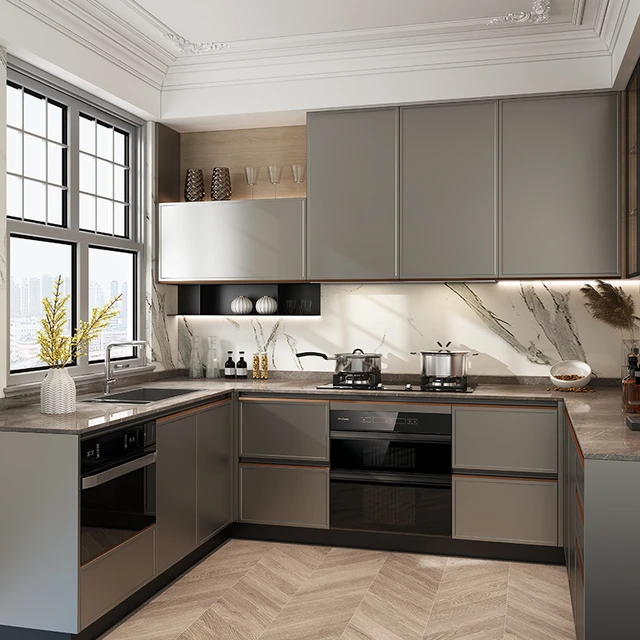 Introduction:
Introduction:
Open kitchen designs have gained popularity in recent years as a way to promote connection, functionality, and visual appeal in modern homes. By eliminating walls and barriers, open kitchens create a seamless flow between the cooking, dining, and living areas. In this comprehensive guide, we will explore the benefits of open kitchen designs, different layout options, and tips for maximizing space and functionality. Whether you’re renovating your current kitchen or designing a new one, this guide will provide valuable insights into the world of open kitchen designs.
Benefits of Open Kitchen Designs
Enhanced Social Interaction:
Open kitchen designs provide a space where family members and guests can interact and engage with one another.
Cooks can socialize while preparing meals, connecting the kitchen to the larger living or dining areas.
Improved Sightlines and Natural Light:
Walls that separate kitchen spaces can restrict natural light and obstruct sightlines.
Open kitchen designs eliminate barriers, allowing natural light to flow freely and creating a more spacious and inviting atmosphere.
Increased Functionality and Accessibility:
Open kitchen designs offer easier access to appliances, utensils, and storage.
With a more expansive layout, cooks can navigate the kitchen more efficiently and enjoy a seamless cooking experience.
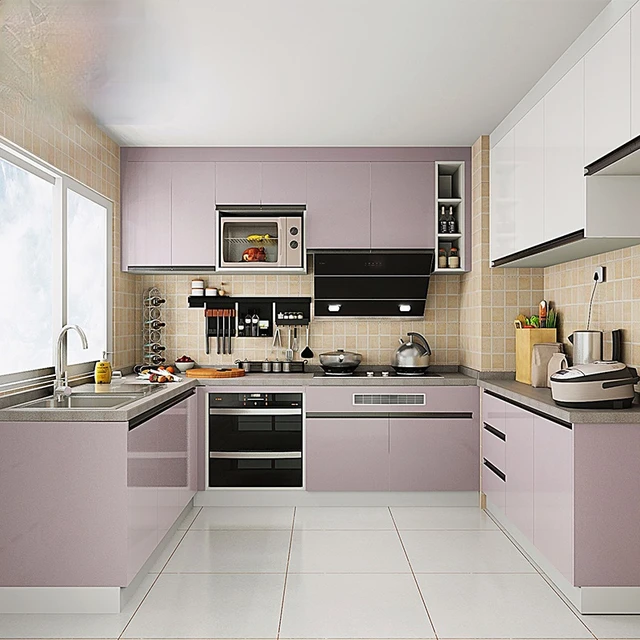 Layout Options for Open Kitchens
Layout Options for Open Kitchens
L-shaped Layout:
The L-shaped layout features countertops and cabinets along two adjacent walls, with one open end for easy movement.
This layout maximizes storage and workspace while providing an open connection to the living or dining area.
U-shaped Layout:
The U-shaped layout consists of cabinetry and countertops along three walls, forming a U shape.
This layout provides ample storage and workspace and allows for an efficient workflow between the cooking, preparation, and cleaning areas.
Kitchen Island:
Including a kitchen island in an open kitchen design offers additional workspace, storage, and seating options.
The island acts as a hub for cooking, dining, and socializing, further fostering a sense of connection in the space.
Tips for Maximizing Space and Functionality
Efficient Storage Solutions:
Incorporate smart storage solutions such as pull-out cabinets, adjustable shelving, and drawer organizers.
Utilize vertical space with tall cabinets or open shelves for displaying and storing frequently used items.
Zoning and Separation:
Create visual separation within the open space by using different materials, colors, or textures for the kitchen and living or dining areas.
This helps define separate zones and adds visual interest to the overall design.
Strategic Lighting:
Ensure adequate task lighting for food preparation areas, such as under-cabinet lighting or pendant lights over the kitchen island.
Incorporate ambient and accent lighting to create a warm and inviting atmosphere during gatherings or meals.
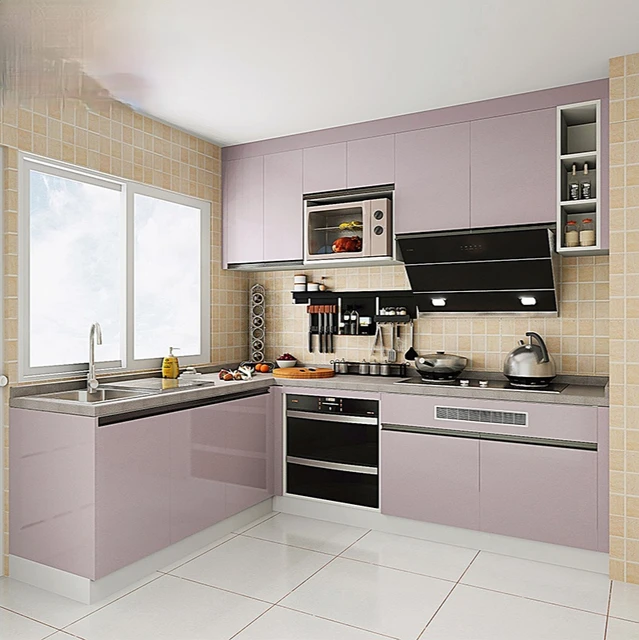 Considering Practical Considerations
Considering Practical Considerations
Noise and Privacy:
Open kitchen designs may lead to increased noise levels during cooking or socializing.
Consider incorporating noise-reducing elements such as sound-absorbing materials or soft furnishings to minimize disturbances.
Odor and Ventilation:
Proper ventilation is essential in open kitchens to prevent cooking odors from spreading throughout the entire space.
Install a range hood or invest in a good-quality ventilation system to keep the air fresh and odor-free.
Privacy and Flexibility:
If privacy is desired, consider incorporating options such as sliding doors or room dividers that can be closed when needed.
This offers flexibility to segment the space without sacrificing the benefits of an open kitchen design.
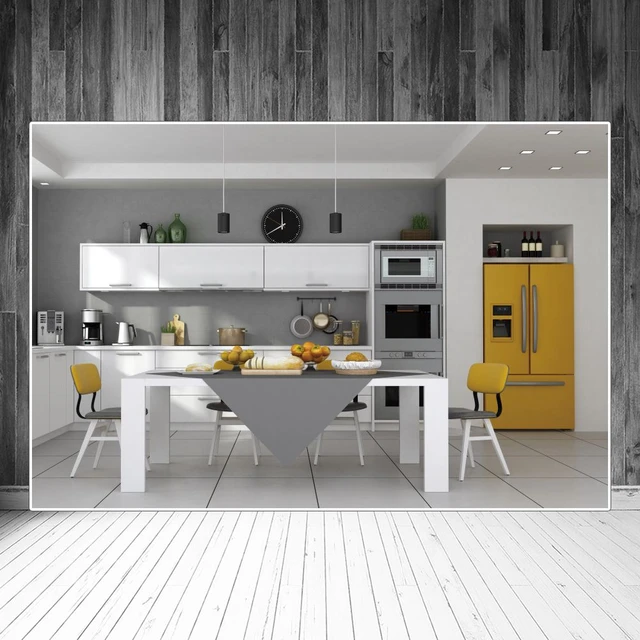 Here are some tips for the daily maintenance of open kitchens:
Here are some tips for the daily maintenance of open kitchens:
Open kitchen designs require regular maintenance, organization, and cleaning to keep them functional and visually appealing. Here are some tips for the daily maintenance of open kitchens:
Declutter Countertops:
Keep countertops clear of unnecessary items by storing them in cabinets or designated storage areas. This not only enhances the open and spacious feel but also makes it easier to clean and maintain.
Wipe Down Surfaces:
After each meal preparation or cooking session, wipe down countertops, kitchen islands, and other surfaces with a damp cloth to remove any spills, crumbs, or food residue. Regular maintenance helps prevent these stains from hardening or becoming difficult to clean later.
Sweep or Vacuum Floors:
Regularly sweep or vacuum the kitchen floors to remove dirt, dust, and food particles. Pay attention to corners and hard-to-reach areas. If your floors are suitable for wet mopping, consider doing that to remove sticky spots or spills.
Clean Appliances:
Regularly clean kitchen appliances, including the stovetop, oven, microwave, and refrigerator. Use appropriate cleaning products and follow the manufacturer’s instructions. Pay special attention to the vents and filters, as they can accumulate grease or dirt.
Organize Cabinets and Shelves:
Maintain an organized and clutter-free storage system within the cabinets and shelves. Regularly review and declutter items that are not used frequently. This practice improves accessibility and makes it easier to find what you need.
Dishwashing and Sink Maintenance:
Wash and put away dishes promptly to avoid clutter and keep the sink area clean. Clean the sink regularly using a mild detergent or cleaning solution to remove stains and maintain its appearance.
Ventilation and Odor Control:
Ensure proper ventilation in the kitchen area to remove cooking odors and prevent the buildup of moisture. Use exhaust fans or open windows when cooking. Consider using air fresheners or odor absorbers to maintain a pleasant scent in the kitchen.
Regular Deep Cleaning:
Schedule regular deep cleaning tasks, such as cleaning the oven, de-greasing and scrubbing the stovetop, and deep-cleaning the refrigerator. These tasks can be done on a weekly or monthly basis, depending on the level of use and personal preference.
By following these daily maintenance practices, your open kitchen design will remain tidy, functional, and visually appealing. Additionally, establishing a cleaning routine can make the tasks more manageable and ensure that your kitchen stays in top condition.
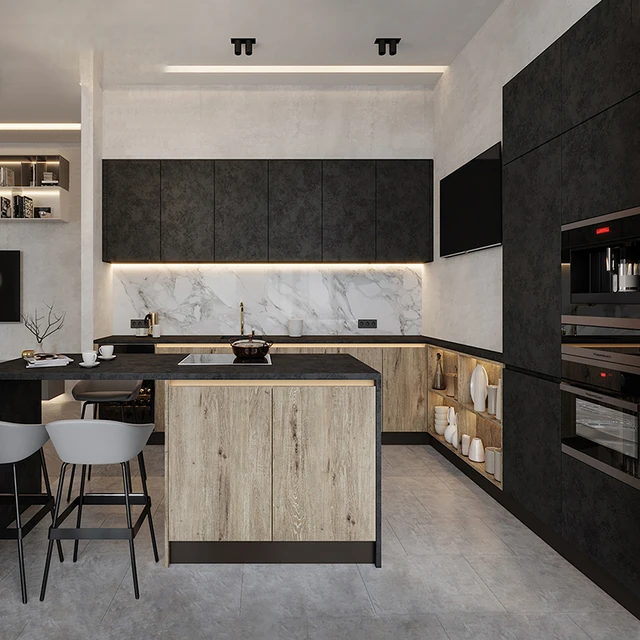 Conclusion:
Conclusion:
Open kitchen designs have revolutionized the way we perceive and interact with our kitchens. Their ability to foster connection, improve functionality, and enhance visual appeal has made them increasingly popular in modern homes. By understanding the benefits, exploring different layout options, and implementing space-maximizing and practical considerations outlined in this guide, you can confidently design an open kitchen that suits your lifestyle and preferences. Whether you’re hosting parties, cooking family meals, or simply enjoying quiet moments in the heart of your home, an open kitchen design will provide a seamless and integrated space that inspires both connection and enjoyment.
